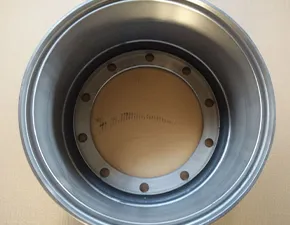
-
 Afrikaans
Afrikaans -
 Albanian
Albanian -
 Amharic
Amharic -
 Arabic
Arabic -
 Armenian
Armenian -
 Azerbaijani
Azerbaijani -
 Basque
Basque -
 Belarusian
Belarusian -
 Bengali
Bengali -
 Bosnian
Bosnian -
 Bulgarian
Bulgarian -
 Catalan
Catalan -
 Cebuano
Cebuano -
 Corsican
Corsican -
 Croatian
Croatian -
 Czech
Czech -
 Danish
Danish -
 Dutch
Dutch -
 English
English -
 Esperanto
Esperanto -
 Estonian
Estonian -
 Finnish
Finnish -
 French
French -
 Frisian
Frisian -
 Galician
Galician -
 Georgian
Georgian -
 German
German -
 Greek
Greek -
 Gujarati
Gujarati -
 Haitian Creole
Haitian Creole -
 hausa
hausa -
 hawaiian
hawaiian -
 Hebrew
Hebrew -
 Hindi
Hindi -
 Miao
Miao -
 Hungarian
Hungarian -
 Icelandic
Icelandic -
 igbo
igbo -
 Indonesian
Indonesian -
 irish
irish -
 Italian
Italian -
 Japanese
Japanese -
 Javanese
Javanese -
 Kannada
Kannada -
 kazakh
kazakh -
 Khmer
Khmer -
 Rwandese
Rwandese -
 Korean
Korean -
 Kurdish
Kurdish -
 Kyrgyz
Kyrgyz -
 Lao
Lao -
 Latin
Latin -
 Latvian
Latvian -
 Lithuanian
Lithuanian -
 Luxembourgish
Luxembourgish -
 Macedonian
Macedonian -
 Malgashi
Malgashi -
 Malay
Malay -
 Malayalam
Malayalam -
 Maltese
Maltese -
 Maori
Maori -
 Marathi
Marathi -
 Mongolian
Mongolian -
 Myanmar
Myanmar -
 Nepali
Nepali -
 Norwegian
Norwegian -
 Norwegian
Norwegian -
 Occitan
Occitan -
 Pashto
Pashto -
 Persian
Persian -
 Polish
Polish -
 Portuguese
Portuguese -
 Punjabi
Punjabi -
 Romanian
Romanian -
 Russian
Russian -
 Samoan
Samoan -
 Scottish Gaelic
Scottish Gaelic -
 Serbian
Serbian -
 Sesotho
Sesotho -
 Shona
Shona -
 Sindhi
Sindhi -
 Sinhala
Sinhala -
 Slovak
Slovak -
 Slovenian
Slovenian -
 Somali
Somali -
 Spanish
Spanish -
 Sundanese
Sundanese -
 Swahili
Swahili -
 Swedish
Swedish -
 Tagalog
Tagalog -
 Tajik
Tajik -
 Tamil
Tamil -
 Tatar
Tatar -
 Telugu
Telugu -
 Thai
Thai -
 Turkish
Turkish -
 Turkmen
Turkmen -
 Ukrainian
Ukrainian -
 Urdu
Urdu -
 Uighur
Uighur -
 Uzbek
Uzbek -
 Vietnamese
Vietnamese -
 Welsh
Welsh -
 Bantu
Bantu -
 Yiddish
Yiddish -
 Yoruba
Yoruba -
 Zulu
Zulu
what are the disadvantages of drum brakes
Disadvantages of Drum Brakes
Drum brakes, a common braking system found in many vehicles, offer certain advantages such as cost-effectiveness and simplicity in design. However, they come with several disadvantages that can impact their overall performance and safety.
Disadvantages of Drum Brakes
Another disadvantage is the complexity of the drum brake system. Unlike disc brakes, which have a simpler design and easier maintenance, drum brakes have more components including drums, shoes, and springs. This complexity can make them more challenging to service or repair, leading to higher maintenance costs over time. Furthermore, the adjustment of drum brakes is required periodically to maintain optimal performance, which can be an inconvenience for vehicle owners.
what are the disadvantages of drum brakes

In addition, drum brakes generally provide less consistent braking performance compared to disc brakes, especially in wet conditions. Water can accumulate inside the drum, resulting in reduced friction when the brakes are applied. This can cause a delay in response time, making drum brakes less reliable in adverse weather conditions.
Weight is another consideration. Drum brakes tend to be heavier than their disc counterparts, which can impact a vehicle's overall weight and fuel efficiency. In performance-oriented or sport applications, this added weight can affect handling and acceleration.
Lastly, drum brakes typically have a longer stopping time than disc brakes, especially in high-performance scenarios. This difference can be crucial for driver safety, particularly in emergency braking situations where every millisecond matters.
In conclusion, while drum brakes offer an economical solution for certain applications, their disadvantages—including overheating, maintenance complexity, inconsistent performance in wet conditions, additional weight, and longer stopping distances—make them less desirable than disc brakes for many modern vehicles. As automotive technology continues to evolve, the shift towards more efficient and reliable braking systems is likely to decrease the prevalence of drum brakes on new cars.
-
Safety Features of Red Brake DrumsNewsAug.01,2025
-
Rear Drum Brakes Replacement for Older VehiclesNewsAug.01,2025
-
Professional Brake Drum Turning Services ExplainedNewsAug.01,2025
-
How Brake Drum and Rotor Puller WorksNewsAug.01,2025
-
Brakes and Drums CompatibilityNewsAug.01,2025
-
Anticipate Failures in Brake Drum MotorNewsAug.01,2025
-
What Are Drum BrakesNewsJul.07,2025
